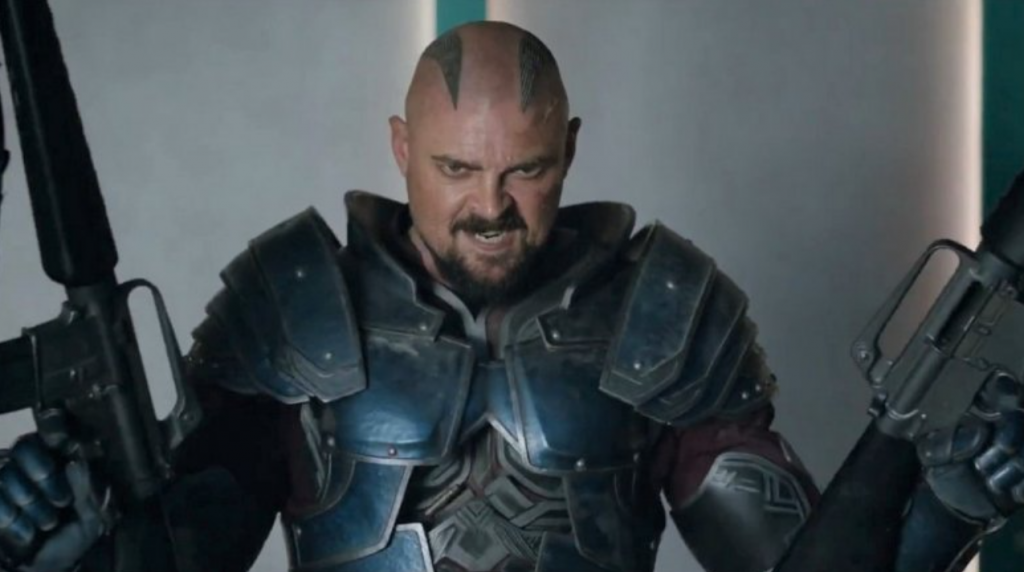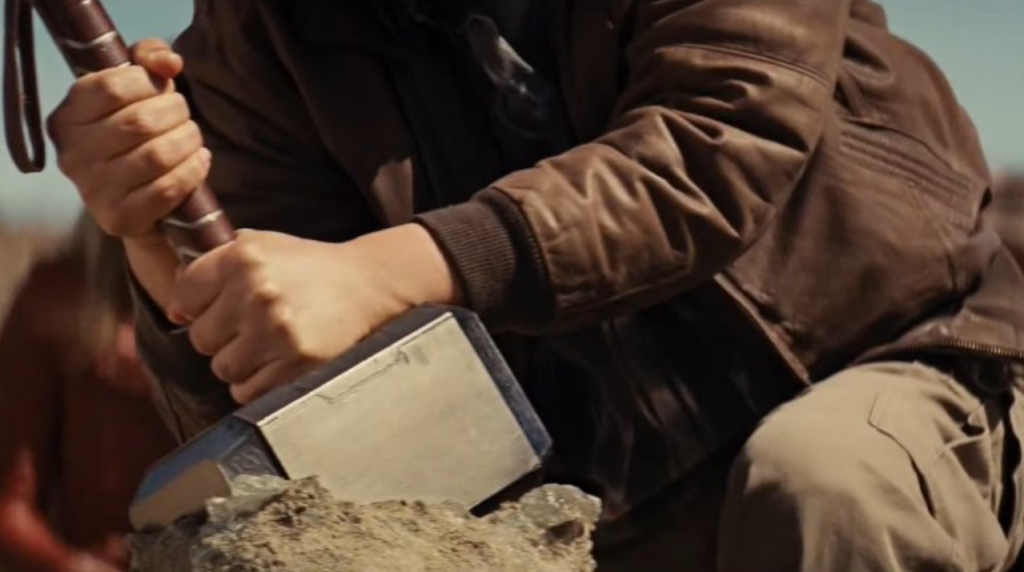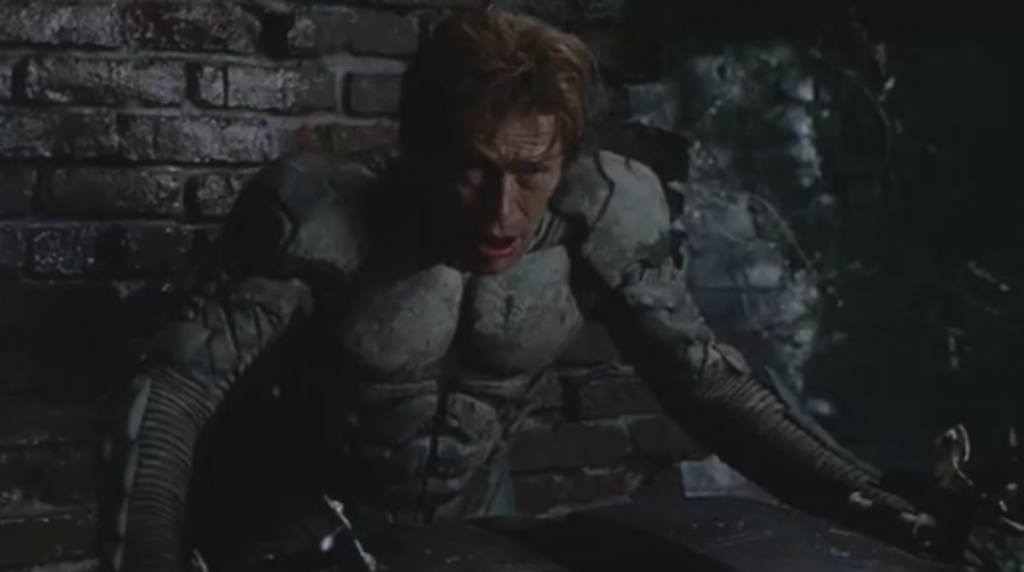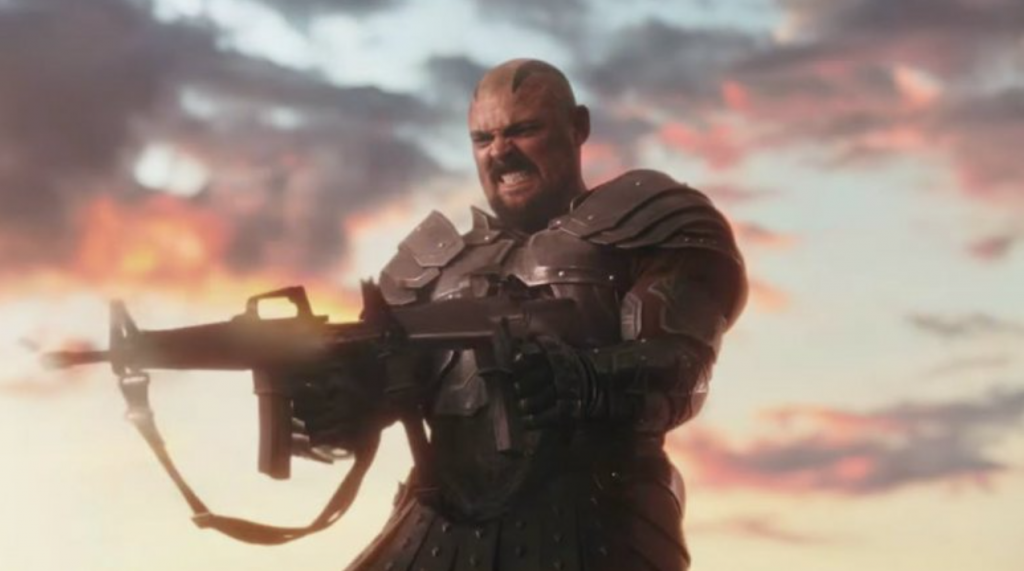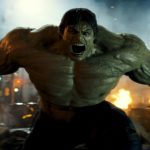Marvel comics offer boundless possibilities compared to movies. The creators have the freedom to explore vast storylines, extensive character rosters, and breathtaking locations without constraints like special effects, costume limitations, or budgetary concerns. This artistic liberty often leads to awe-inspiring action sequences and epic spectacles. It’s no surprise that the rich imagination found on the comic book page frequently serves as inspiration for the silver screen.
Indeed, Marvel movies exist in their own distinct realm, separate from the comics, for both creative and practical reasons. Trying to replicate the entirety of a comic book storyline, like the 2006 Marvel comic “Civil War,” in a film such as “Captain America: Civil War” would present challenges, considering the introduction of numerous characters yet to be featured in the Marvel Cinematic Universe (MCU). However, every now and then, whether through subtle visual nods or entire battle sequences, filmmakers successfully incorporate elements directly from the comic book pages. These moments range from iconic poses to pivotal character deaths. Explore some of the Marvel movie moments that faithfully adapted the comics in this captivating article.
Captain America: Civil War copies a very iconic cover
Under the direction of the Russo brothers, Captain America: Civil War skillfully captures the key moments from the acclaimed 2006 comic series, also titled Civil War. The central conflict in the movie centers around the division between superheroes who support the idea of registration and those who oppose it. Captain America (Chris Evans) and Iron Man (Robert Downey Jr.) are at the forefront of these opposing factions. The catalyst for the conflict is a tragic incident where innocent civilians lose their lives during a battle involving superheroes.
However, it’s important to note that there are significant differences between the comic and the film adaptation. Several characters who played pivotal roles in the comic, such as Punisher, the Fantastic Four, the X-Men, the New Warriors, and Namor, are absent from the movie. Additionally, while the conflict in the comic was primarily confined to the United States, the film introduces the element of international legislation through the United Nations. Captain America is assassinated in the comics, and the conflict does not revolve around Bucky as it does in the movie.
However, despite the differences, the filmmakers of Captain America: Civil War managed to pay homage to the comic in a way that resonated with fans. In the climactic confrontation between Captain America and Iron Man, there is a moment that closely resembles the cover of Civil War #7, the final issue of the groundbreaking series. As Steve Rogers charges forward with his shield raised, Tony Stark unleashes his repulsors, creating a shower of sparks that mirrors the iconic image. While the movie setting differs from the comic, and the surroundings lack the presence of defeated heroes, and their costumes may not be as battle-worn as depicted on the cover, every fan watching the film instantly recognizes the nod to the source material.
Thor pays homage to the comics with some hammer time.
Both the Civil War comic and the corresponding film share a surprising absence: Thor. The mighty Asgardian is noticeably absent in both narratives, with no direct involvement in the conflict. In the comic, Thor’s whereabouts remain unknown as he had been missing since the events of Avengers Disassembled in 2004. Meanwhile, the film offers an explanation for Thor’s absence, stating that he was occupied with restoring order to the nine realms. So, whether on the page or on the screen, the absence of Thor adds an intriguing element to the hero-versus-hero dynamics in Civil War.
Although Thor himself may be absent, his impact is still evident in the pages of Fantastic Four, coinciding with the escalating tension in Civil War. In the comic issue Fantastic Four #536 (2006), Mjolnir descends to Earth, creating a significant crater in Oklahoma, reminiscent of the iconic scene in the first Thor movie set in New Mexico. As the story unfolds, various characters, including Doctor Doom, attempt to wield the mighty hammer. Still, it is a parade of Thor aspirants who ultimately take their turns, each failing to lift the legendary weapon.
In the subsequent issue, Fantastic Four #538, the arrival of Dr. Donald Blake, Thor’s former alter ego, adds a new twist to the story. Unwilling to wait his turn, Blake effortlessly overpowers the other contenders, eventually seizing Mjolnir and vanishing in a radiant beam of light. While the film omits this particular sequence, along with the Fantastic Four’s clash against Doombots, it does showcase the aspiring candidates attempting to wield the hammer, including a cameo by Stan Lee.
Logan fights a hunter on more than one occasion
At the conclusion of X-Men: The Last Stand, Logan finds himself tormented and burdened by guilt. Having taken Jean Grey’s life, he cannot forgive himself for his actions. In 2013’s The Wolverine, we encounter a reclusive Logan, now residing in the Canadian wilderness, sporting an unruly beard and hair reminiscent of the character in Cast Away. However, life in seclusion proves challenging as Logan is compelled to confront a bear that has been driven mad by a poison-tipped arrow. Under the influence of the toxin, this bear has claimed five individuals’ lives. Determined to seek justice for both the victims and the bear, Wolverine embarks on a mission to locate the hunter responsible.
This portion of the film directly mirrors the events of 1982’s Wolverine #1. The comic depicts Logan embarking on a quest to track down the killer bear and confront the hunter responsible for its deadly rampage, which is precisely portrayed in the movie. Although there are some differences, such as Logan not being a hermit in the comic and not being burdened with excessive guilt, the core elements of the storyline remain intact.
In the comic, the confrontation between Logan and the hunter is left to the reader’s imagination. At the same time, the film showcases Logan’s vengeance by impaling the hunter’s hand to a table using the same poisoned arrow extracted from the bear’s corpse. This scene underscores Wolverine’s fierce protectiveness towards his animal companions, making it clear that crossing paths with him or harming his furry friends is unwise.
Spider-Man is buried alive in both the movie and the comic
One of the most iconic moments in web-slinging history occurs in 1966’s Amazing Spider-Man #33. The comic opens with Spider-Man trapped beneath an immense heap of steel following a grueling battle with Doctor Octopus. In a remarkable five-page sequence often hailed as Steve Ditko’s pinnacle achievement on the series, Spider-Man initially succumbs to the weight of failure and impending doom. However, he summons a tremendous surge of determination and, through sheer willpower, manages to free himself from the crushing burden of debris.
This particular scene served as a clear inspiration for director Jon Watts and the creative team behind Spider-Man: Homecoming. In this thrilling superhero tale, Peter Parker (Tom Holland) finds himself trapped under a heavy mass of cement. While the antagonist is different, with the Vulture (Michael Keaton) taking the role instead of Doctor Octopus, the essence remains unchanged. Initially, Peter is overcome with defeat, futilely calling out for assistance.
Although the movie doesn’t feature the same powerful monologue penned by Stan Lee in Amazing Spider-Man #33, where Spidey vows to protect his beloved Aunt May, the film’s Spider-Man, much like his comic counterpart, breaks free through a simple yet unwavering refusal to accept failure.
Both the movie and the comic deliver Hulk on a helicopter
During the early 2000s, Marvel introduced its “Ultimate” line of comics, presenting revamped stories featuring their iconic characters. A significant aspect of this update was the inclusion of graphic violence, and one character who exemplified this shift was Bruce Banner.
The Hulk made his initial appearance in the Ultimate Universe through “Ultimate Marvel Team-Up,” but it was in “Ultimates” that he transformed into a murderous and cannibalistic version of himself. Following his destructive rampage in New York City, Banner is imprisoned in a facility reminiscent of the one featured in the 2012 film “The Avengers.” While the majority of “Ultimates” unfolds without Hulk, his return is foreshadowed in the concluding pages of “Ultimates #12.” As the Ultimates battle against the invading Chitauri, Banner remains restrained in a straitjacket within a helicopter, where he is subjected to physical assault by a S.H.I.E.L.D. soldier before being thrown out of the aircraft. As expected, the subsequent issue commences with the Hulk crashing to the ground, marking a pivotal moment in the ongoing conflict.
In the 2008 film “The Incredible Hulk,” a more romantic rendition of this moment unfolds. Captured by General Ross and aware of Emil Blonsky’s transformation into the Abomination, Banner volunteers to unleash the Hulk and confront the rampaging creature. Instead of being forcibly ejected, Banner willingly leaps from the helicopter into a besieged Harlem, following a tender kiss shared with Betty. This scene pays homage to the comics, although it is regrettable that the movie itself was deemed a disappointment.
T’Challa takes a fall on the page, and the screen
In his initial debut in 1973’s “Jungle Action” #6, Erik Killmonger’s motivations differed from his portrayal in the film “Black Panther.” While the comic version didn’t aspire to global political change, Michael B. Jordan’s interpretation depicted the supervillain as a revolutionary. Nevertheless, both iterations conclude with a shared outcome: Killmonger forcefully tossing T’Challa from the summit of Warrior Falls.
Apart from the differences in Killmonger’s motivations, the notable contrast in the Warrior Falls fight scenes lies in how Killmonger emerges victorious against his royal adversary. In the film, Killmonger initiates a ritual combat challenge, similar to his confrontation with M’Baku, where T’Challa’s powers are nullified, resulting in a fair one-on-one confrontation. Conversely, in “Jungle Action” #6, T’Challa returns to a divided Wakanda orchestrated by Killmonger.
When the Panther confronts his foe, Killmonger calls upon his leopard companion, Preyy, for support. Although T’Challa manages to defeat the large cat, the battle leaves him weakened and injured, allowing Killmonger to cast Black Panther from the falls easily. It’s safe to say that the Killmonger portrayed in the movie holds a greater appeal than his counterpart in “Jungle Action” #6.
Marvel killed Green Goblin the same way twice
In 1973, the iconic issue of “Amazing Spider-Man” #121 marked a significant turning point in comic book history with the tragic demise of Peter Parker’s girlfriend, Gwen Stacy, during a fierce confrontation with the Green Goblin. This moment is widely recognized as one of the most pivotal events that signaled the transition from the Silver Age to the more mature Bronze Age of comics. Following Gwen Stacy’s heartbreaking death, the subsequent issue delves into Spider-Man’s relentless pursuit of the Green Goblin, culminating in a climactic battle that ultimately leads to the Goblin’s own demise.
In 2002’s “Spider-Man,” directed by Sam Raimi and starring Tobey Maguire, a heartfelt homage is paid to the tragic tale of Gwen Stacy’s death in more ways than one. Instead of Gwen Stacy, it is Mary Jane Watson (played by Kirsten Dunst) who becomes the hostage of the Green Goblin (portrayed by Willem Dafoe). Thankfully, MJ manages to survive her encounter with the supervillain. However, a significant portion of the climactic battle between Spider-Man and the Green Goblin takes place on the iconic Brooklyn Bridge, reminiscent of the memorable setting in “Amazing Spider-Man” #121.
In a parallel demise to his comic book counterpart, Norman Osborn meets his end in a strikingly similar fashion. In the film, as Goblin tries to convince Parker of his reformation, he unleashes his glider as a lethal weapon. Sensing the impending danger, Spider-Man swiftly evades the attack, causing Osborn to impale himself on a brick wall with his own glider. With his final breath, he utters the iconic phrase, “Peter … don’t tell Harry,” before succumbing to his fate. In the comic, the events unfold in a similar manner, except that the Green Goblin makes no pretense of being a changed man and, once impaled by the glider, remains silent, leaving no final words.
Spider-Man 3 copies of that bell tower showdown
The influence of the comics on Sam Raimi’s Spider-Man series extends beyond the demise of Green Goblin. In Spider-Man 3, the alien symbiote takes control of Peter Parker, leading him down a path of questionable actions and cringe-worthy musical performances. However, it is when Peter unintentionally harms Mary Jane that he realizes the destructive influence of the symbiote. Seeking liberation, he seeks solace in a church, where the resonating sound of a clanging bell becomes the alien’s downfall. As the bell tolls, its vibrations weaken the symbiote, allowing Parker to forcibly remove it from his body, severing their connection once and for all.
The bell tower scene in Spider-Man 3 draws direct inspiration from the pages of 1985’s Web of Spider-Man #1. The comic storyline unfolds after Peter Parker initially separates from the symbiote with the assistance of the brilliant Reed Richards in 1984’s Amazing Spider-Man #258. However, in Web of Spider-Man #1, the alien symbiote escapes from Richards’ laboratory and seeks out its former host. It latches onto Parker, forcing Spider-Man to navigate a perilous situation, simultaneously battling a gang of winged bank robbers while trying to elude the alien’s grasp. Eventually, he reaches a church tower where the resonating toll of the clanging bells proves to be the venomous parasite’s ultimate weakness. Thankfully, in this comic adaptation, there is no sign of Topher Grace’s character.
Ant-Man and arrow guy make a marvelous pair in more than one medium
While some may argue that the Ant-Man (Paul Rudd) and Hawkeye (Jeremy Renner) collaboration in Captain America: Civil War pays homage to multiple moments, it undeniably draws significant inspiration from the cover of Avengers #223 from 1982. This cover prominently features Scott Lang desperately holding onto an arrowhead. However, there are notable differences between the film and the comic storyline. In the comics, Ant-Man and Hawkeye join forces to confront the villain Taskmaster rather than facing off against Iron Man. Hawkeye shoots an arrow, propelling Ant-Man into the air, allowing the diminutive hero to disarm an explosive device.
The sequence that unfolds after Hawkeye shoots the arrow in Captain America: Civil War is also a clever homage to Marvel’s comics, albeit in an indirect manner. Fans familiar with the long-running Iron Man series may have been reminded of Iron Man #133 from 1980, although Ant-Man’s motives in the comic differ significantly. In Iron Man #133, Tony Stark engages in a fierce two-part clash with the Hulk. While Stark emerges victorious, his suit becomes nonfunctional, leaving him trapped inside. To rescue him, Ant-Man shrinks down to enter the suit and make the necessary repairs.
This nod in Captain America: Civil War becomes a layered tribute, as Iron Man #133 itself pays homage to Avengers #93 from 1971. In that issue, the original Ant-Man (Hank Pym) diminishes in size to enter the robotic body of the Vision and restore him to life. These interconnecting references are akin to a Marvel-ception within the comic universe.
Avengers: Infinity War copies a Spider-Man move from the comics
In Avengers: Infinity War, Spider-Man rises to the occasion on Titan during the clash with Thanos (Josh Brolin) by obstructing the villain’s Vision with his iconic webbing. This particular scene closely mirrors a moment in Infinity Gauntlet #4 from 1991, where Spidey joins the fray in a strikingly similar manner. In the comic, after the Mad Titan has already triumphed over most of Marvel’s surviving heroes, Spider-Man surprises him by ensnaring his face with webs, launching a dual-footed kick, and then leaving Thor to conclude the skirmish.
Unfortunately, the cinematic Spider-Man fares significantly better than his comic book counterpart. In the movie, Drax (Dave Bautista) and Doctor Strange (Benedict Cumberbatch) swiftly join the battle right after Spider-Man webs up Thanos. Shortly thereafter, Spider-Man and Doctor Strange unleash their combined “magic with a kick” against the Mad Titan. However, in the comics, immediately after landing a blow on Thanos’ face, Spidey is brutally defeated by Terraxia—a formidable warrior woman created by the Gauntlet and fiercely loyal to Thanos. Rest assured, though, Peter Parker returns by the end of the series, just like everyone else, so no lasting harm is done.
Thor: Ragnarok copied Skurge’s last stand
In 2017, “Thor: Ragnarok” drew inspiration from one of Marvel’s most heroic moments in its extensive narrative history. As Hela’s (Cate Blanchett) undead hordes invade the Asgardian refugee ship, Skurge (Karl Urban) undergoes a transformative moment. Casting aside his disguise, he unveils his M-16s and valiantly stands against the zombie hordes single-handedly. Skurge bravely holds them off until Hela ultimately claims his life.
The iconic scene from “Thor: Ragnarok” draws direct inspiration from the 1985 masterpiece, “Thor” #362, crafted by the beloved writer and artist Walt Simonson. While “Thor: Ragnarok” delivers an impressive rendition, the emotional impact of Skurge’s last stand in the comics is unparalleled. In the original story, Skurge is among the Asgardians escaping from Hel, the realm of the dead. Upon learning of Thor’s plan to hold back Hela’s demons, Skurge unexpectedly strikes Thor from behind, taking his place at Gjallerbru, the bridge that connects Hel and the realms of the living. Armed with his machine guns, Skurge stands alone, embodying the ultimate heroism.
Although Skurge’s demise is not explicitly shown, it is evident that he meets his fate in a heroic manner. The comic portrays two striking pages where Skurge valiantly fights against the relentless horde, fully aware of his limited time. With unwavering determination, he stands atop a mound of fallen adversaries, wielding his M-16 like a formidable club, epitomizing the spirit of a true warrior. While “Thor: Ragnarok” is a remarkable film, the comic captures the essence of Skurge’s sacrifice in a truly remarkable way, bestowing upon him a worthy and unforgettable death.


